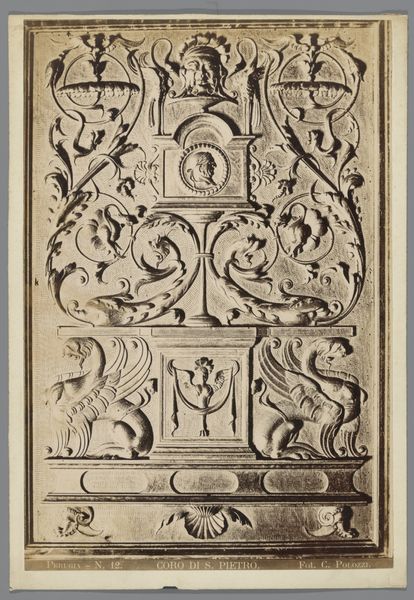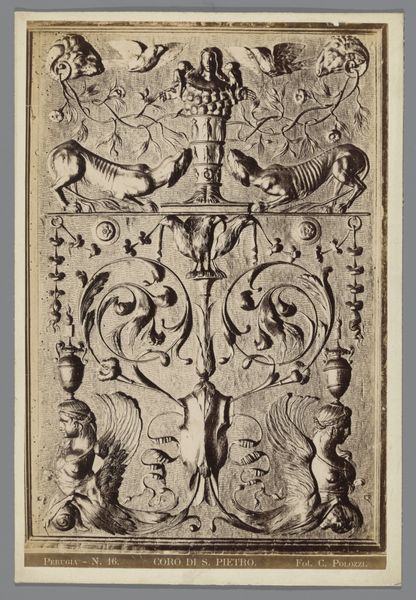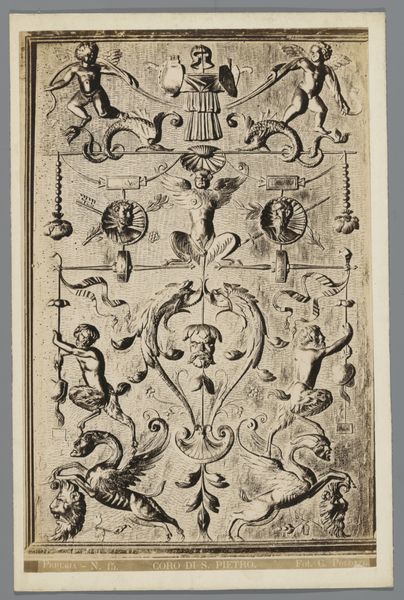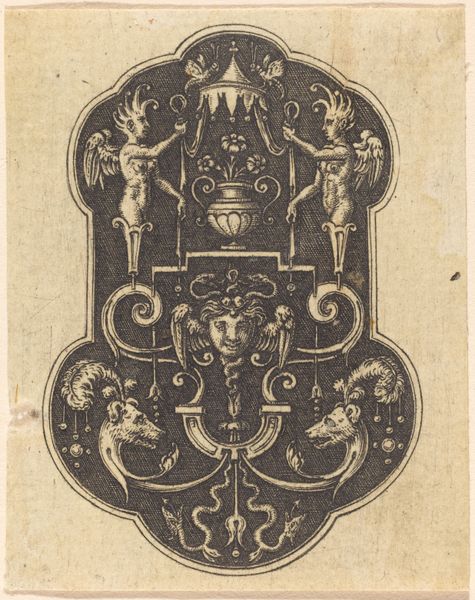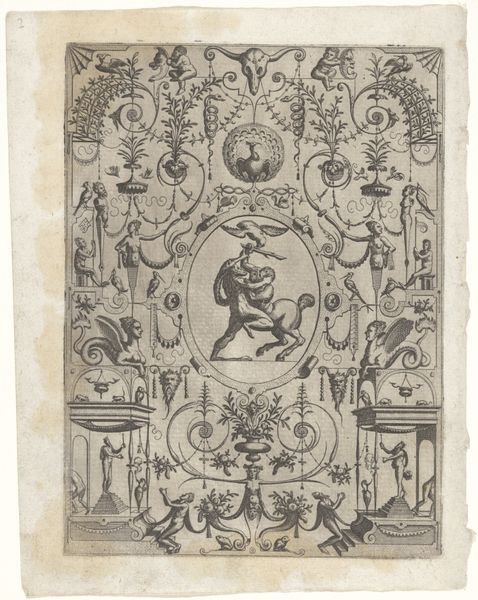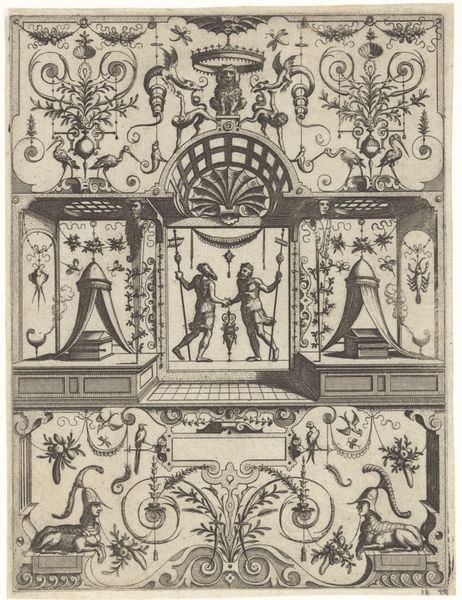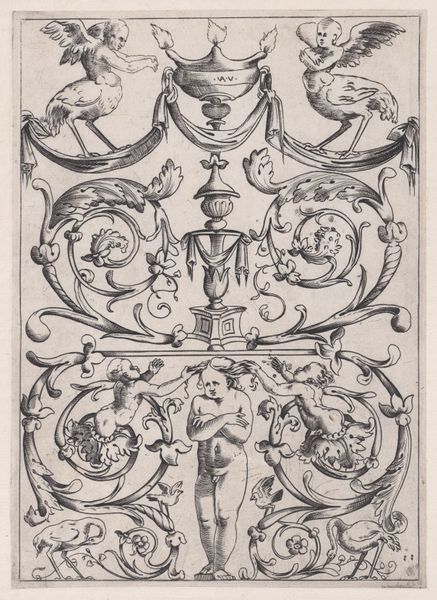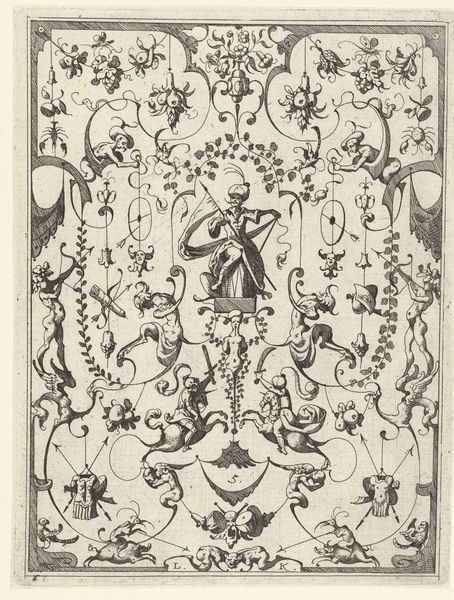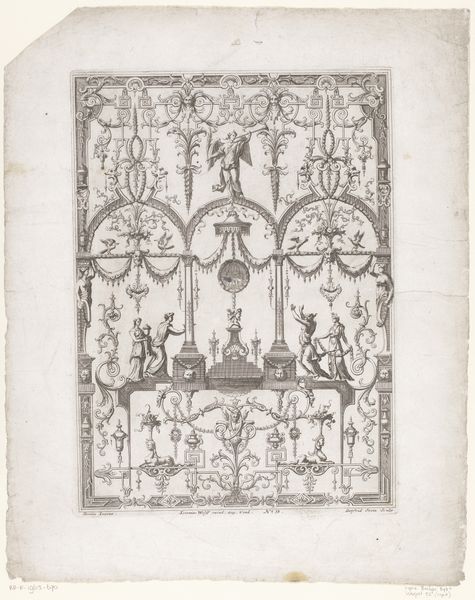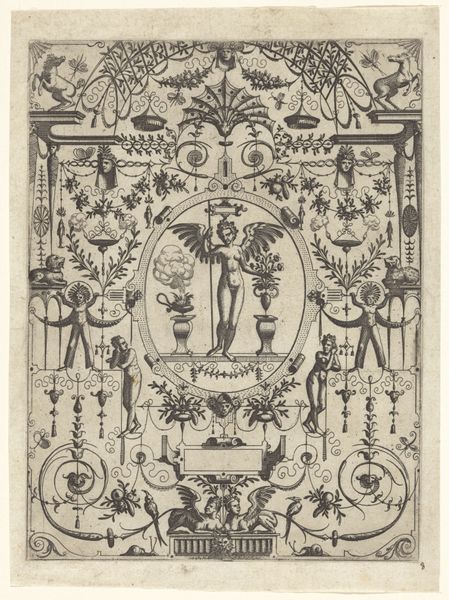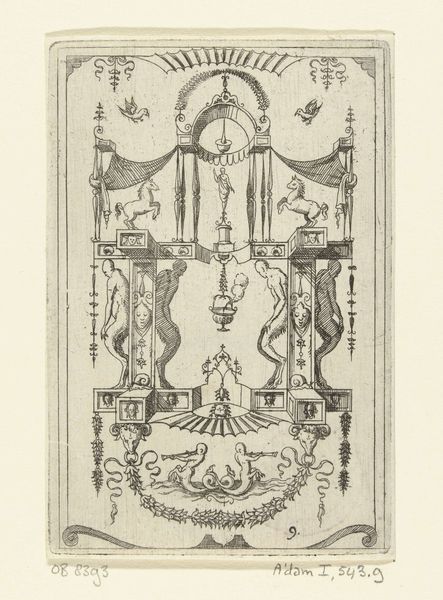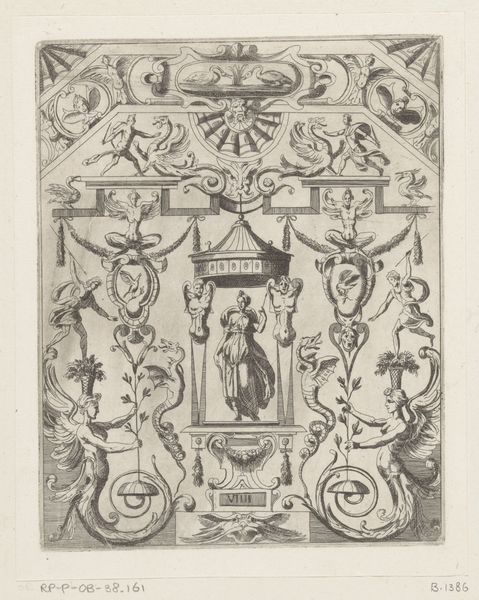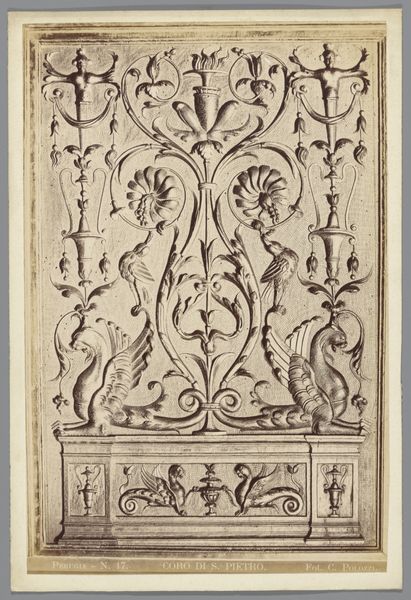
Dimensions: height 260 mm, width 173 mm, height 271 mm, width 188 mm
Copyright: Rijks Museum: Open Domain
Editor: This is "Relief in de San Pietro te Perugia," an etching by C. Polozzi, from 1870. The intricate line work is immediately striking, lending it a certain formality, yet the fantastical creatures introduce a whimsical element. What do you make of the composition and interplay of forms here? Curator: Observe the organization of elements. A strong central axis establishes a formal hierarchy. The mirroring of motifs – the gryphons, the swags – creates a visual balance, a stable equilibrium. But this symmetry is not absolute. Note the slight variations within the mirrored elements. Does this not activate the composition, introduce a subtle dynamism? Editor: It does! And I noticed the juxtaposition of organic, flowing lines with more rigid, geometric shapes. Curator: Precisely. This dialectic is critical to the work’s formal success. The tension between the curvilinear flourishes and the rectilinear framework provides visual interest. What purpose do you suppose this deliberate contrast of form accomplishes? Editor: Maybe it emphasizes the skill required to render both? Or creates a richer viewing experience by stimulating different areas of the brain? Curator: Consider, too, the quality of the line itself. The precision of the etching, the fineness of the marks, contributes to the overall delicacy, yet also to the work’s strength of line. I see the convergence of those shapes and that line creating this really intriguing experience. Editor: That makes sense. Thanks for helping me break down all those elements. I am leaving this artwork with a richer perspective. Curator: A keen observation is indeed vital to appreciating its aesthetic essence.
Comments
No comments
Be the first to comment and join the conversation on the ultimate creative platform.
